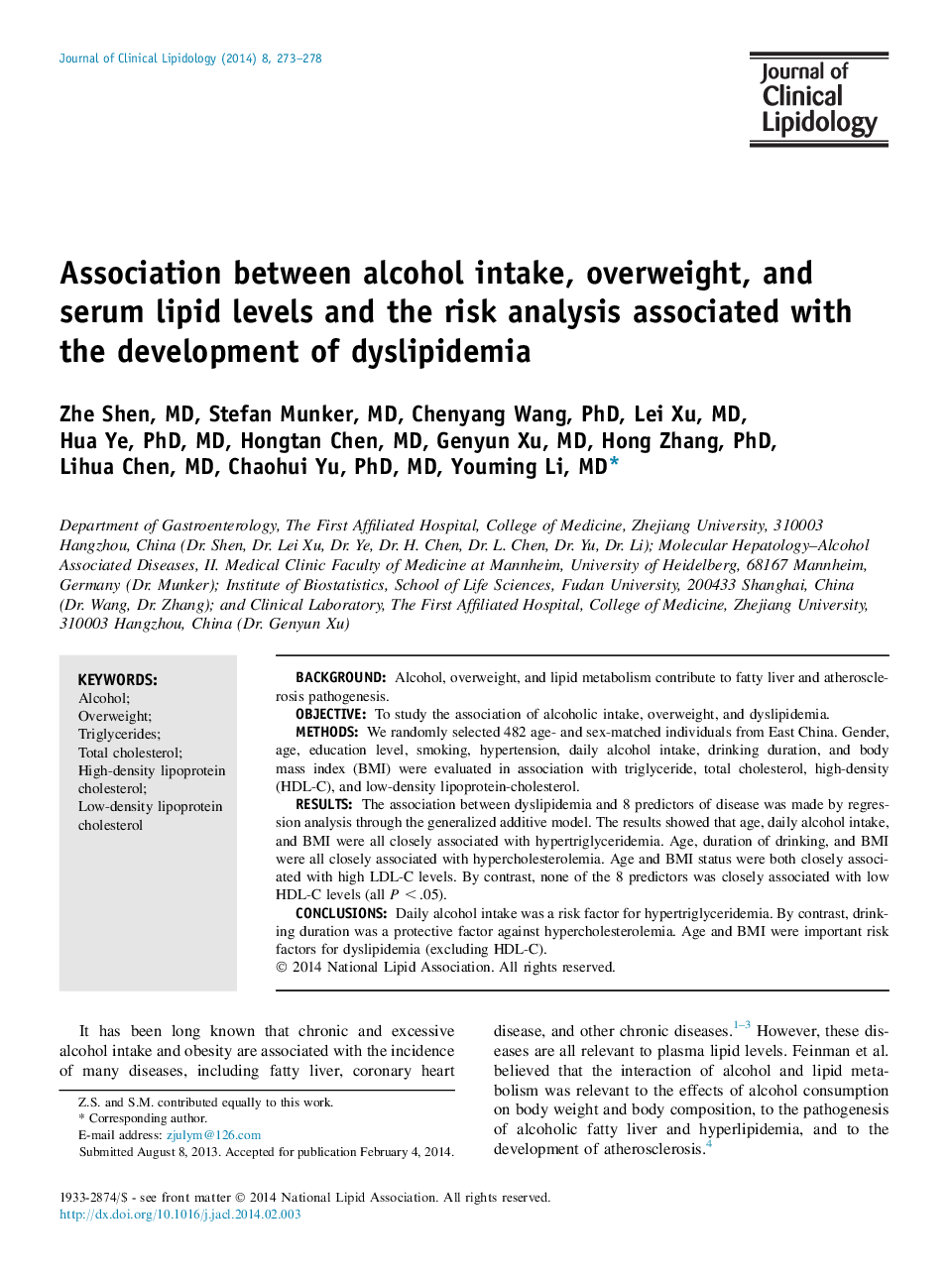| Article ID | Journal | Published Year | Pages | File Type |
|---|---|---|---|---|
| 2966023 | Journal of Clinical Lipidology | 2014 | 6 Pages |
►We estimated the association of alcohol consumption and overweight with dyslipidemia.►We discovered the value of each risk factor to each serum lipid level.►We report the relative risk of each predictor that induced dyslipidemia through the generalized additive model.
BackgroundAlcohol, overweight, and lipid metabolism contribute to fatty liver and atherosclerosis pathogenesis.ObjectiveTo study the association of alcoholic intake, overweight, and dyslipidemia.MethodsWe randomly selected 482 age- and sex-matched individuals from East China. Gender, age, education level, smoking, hypertension, daily alcohol intake, drinking duration, and body mass index (BMI) were evaluated in association with triglyceride, total cholesterol, high-density (HDL-C), and low-density lipoprotein-cholesterol.ResultsThe association between dyslipidemia and 8 predictors of disease was made by regression analysis through the generalized additive model. The results showed that age, daily alcohol intake, and BMI were all closely associated with hypertriglyceridemia. Age, duration of drinking, and BMI were all closely associated with hypercholesterolemia. Age and BMI status were both closely associated with high LDL-C levels. By contrast, none of the 8 predictors was closely associated with low HDL-C levels (all P < .05).ConclusionsDaily alcohol intake was a risk factor for hypertriglyceridemia. By contrast, drinking duration was a protective factor against hypercholesterolemia. Age and BMI were important risk factors for dyslipidemia (excluding HDL-C).
